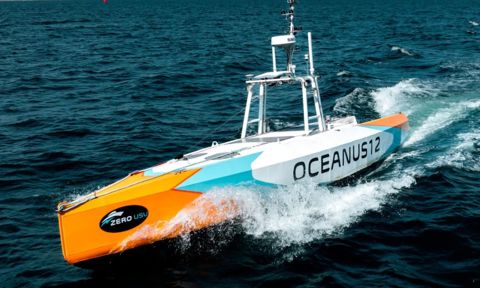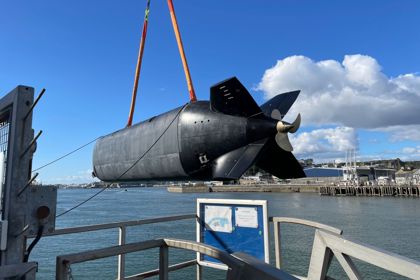At NATO’s REPMUS 2025 exercise, ZeroUSV’s Oceanus12 USV completed a fully autonomous launch and recovery of a thin-lined towed acoustic array without human involvement, showcasing advanced uncrewed maritime capabilities.
ZeroUSV’s Oceanus12 has reportedly become the first uncrewed surface vessel (USV) to autonomously launch and recover a thin-lined towed acoustic array without human involvement.
Completed during NATO’s REPMUS Dynamic Messenger 2025, taking place off the coast of Portugal, the Turnchapel Wharf-based Oceanus12 USV was competitively selected by the Royal Navy for this year’s exercise.
Until now, arrays were typically pre-deployed and clipped onto vessels or required manual crew handling during launch and recovery. Upgraded ahead of REPMUS with advanced sonar, radar, and communications payloads, Oceanus12 demonstrated extended-duration, over-the-horizon autonomous operations as part of NATO’s live experimentation program.
Oceanus12 has also been deploying, on a daily basis, four G-sized sonobuoys per day using ZeroUSV’s prototype SOIL (SOnor Integrated Launch) system. Over the course of the week, the vessel logged more than 40 operational hours at sea with 100% uptime, demonstrating its reliability in live multinational exercises and the ability to deliver results at a lower cost compared to crewed vessels.
“Achieving the first fully autonomous launch and recovery of a towed array is a landmark moment, not just for ZeroUSV but for naval operations worldwide. Demonstrating that this can be done entirely uncrewed, safely and reliably, shows how far the technology has come. When combined with extended endurance, reduced fuel costs and seamless sensor deployment, Oceanus12 is proving what uncrewed systems can deliver now, today in real-world NATO missions.”
- Matthew Ratsey, Founder and Managing Director at ZeroUSV.

About Zero USV
Based at Turnchapel Wharf, Zero USV is aiming to become the first company to offer a charter fleet of autonomous uncrewed surface vessels.
Their first vessel, Oceanus12, arrived at its homeport of Turnchapel Wharf in March 2025, representing 18 months of design, engineering and build, in partnership with sister-armein software company MarineAI.
Designed for long distance over-the-horizon operations, the fleet has also been designed to be mission agnostic, allowing a wide range of potential applications: from surveys and monitoring of critical assets to safety, geophysical surveys, border control, fisheries, defence and more.



